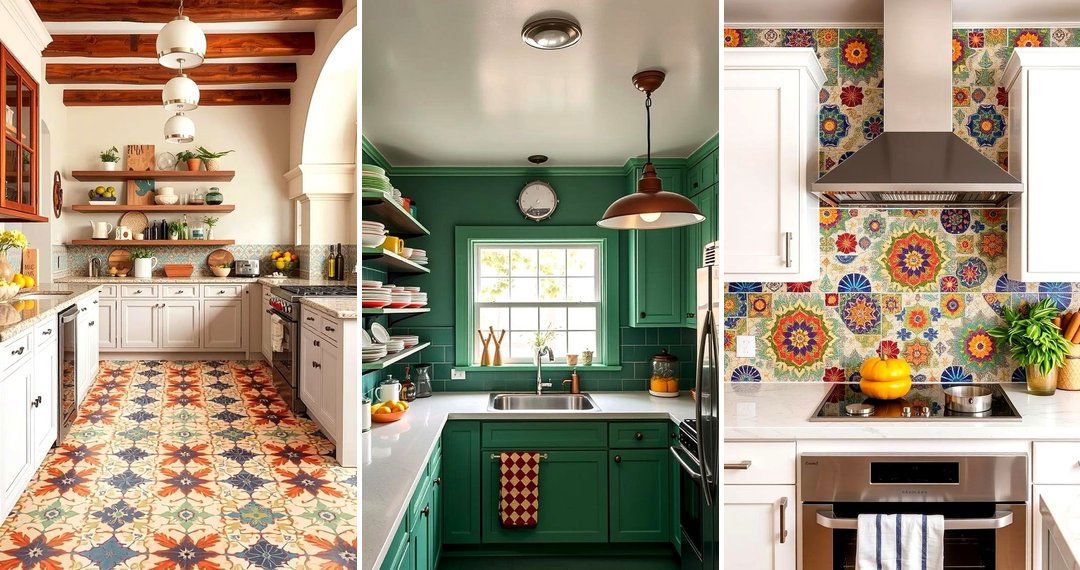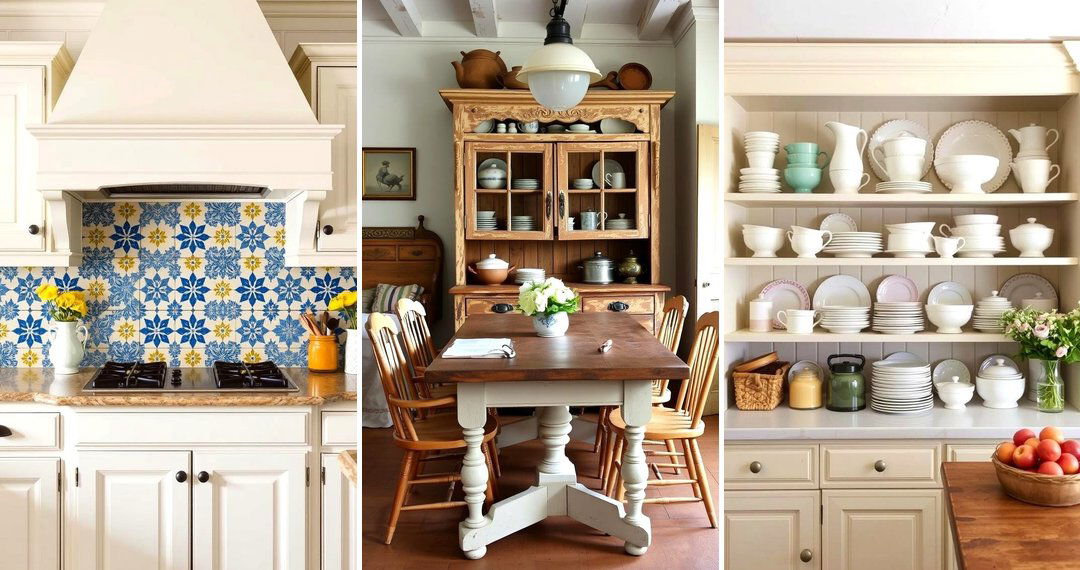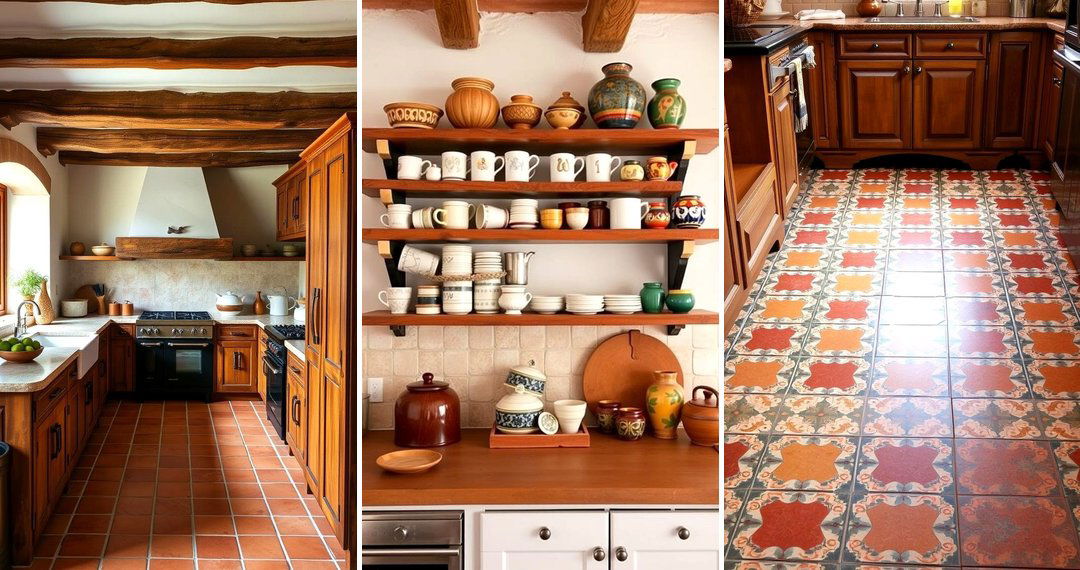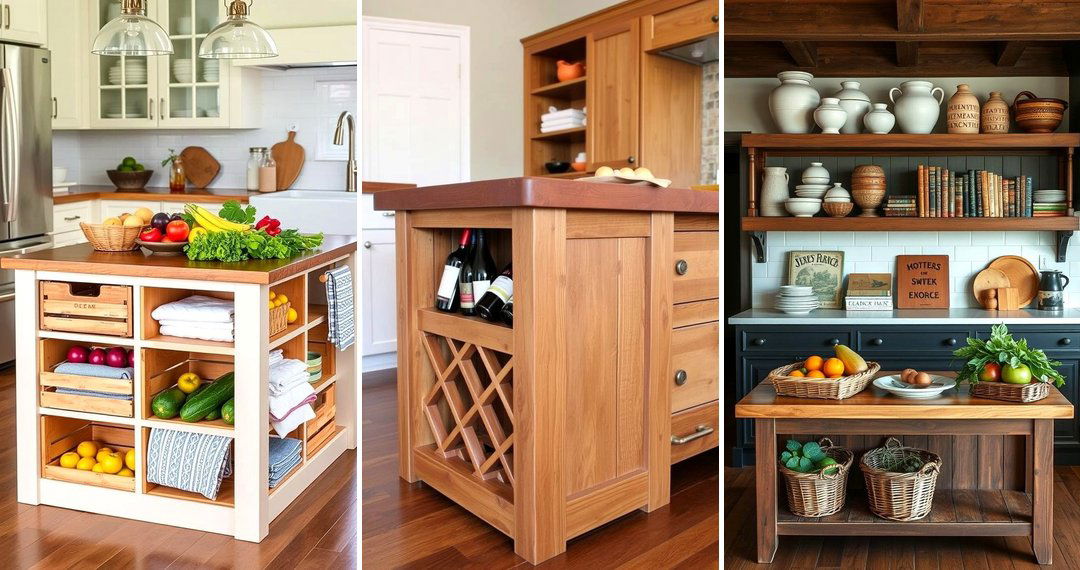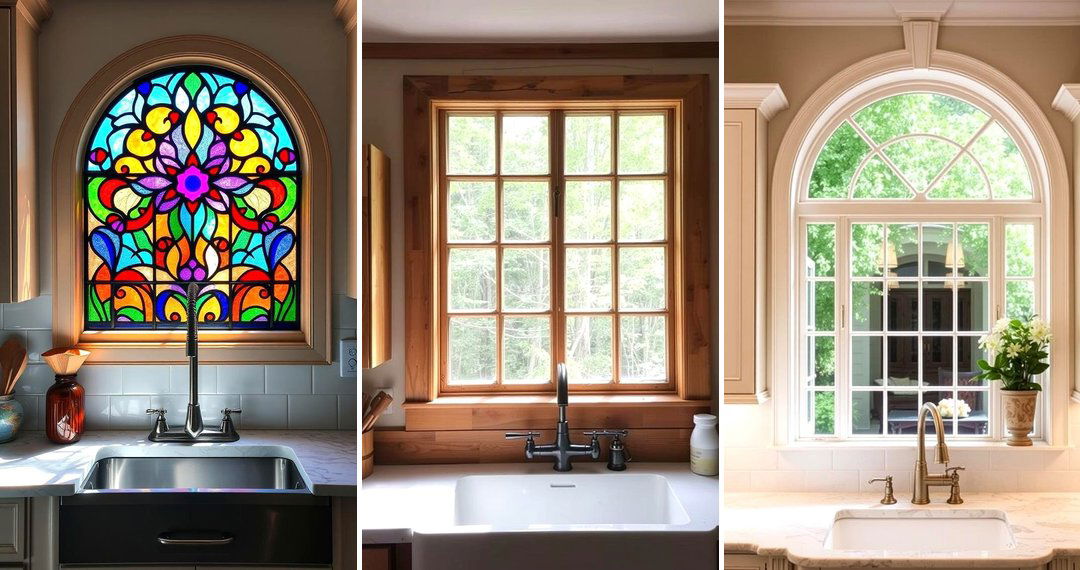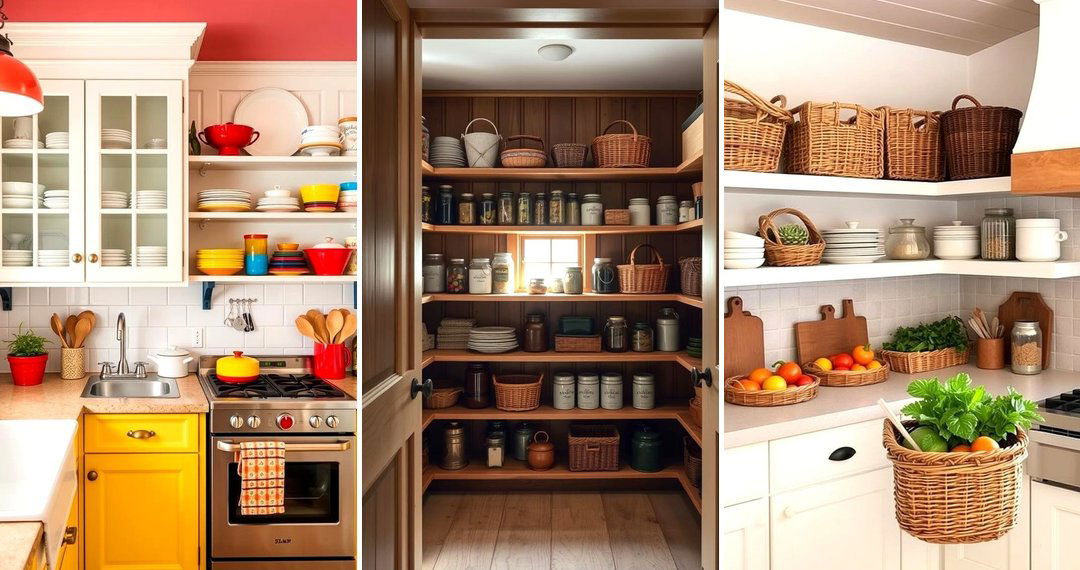Step into a world where ancient culinary traditions blend seamlessly with modern sustainability.
The 24 Primitive Kitchen Ideas showcase time-honored methods that use natural materials and simple techniques to create flavorful, nourishing meals. These ideas celebrate resourcefulness, reconnect you with nature, and encourage creativity in everyday cooking. Discover practical tips that honor the past while inspiring innovation today. Each idea offers a unique way to transform your kitchen into a haven of primitive charm—inviting you to explore the art of cooking as it was meant to be, with simplicity and heart. Embrace the journey with 24 Primitive Kitchen Ideas.

1. Stone Hearth Cooking
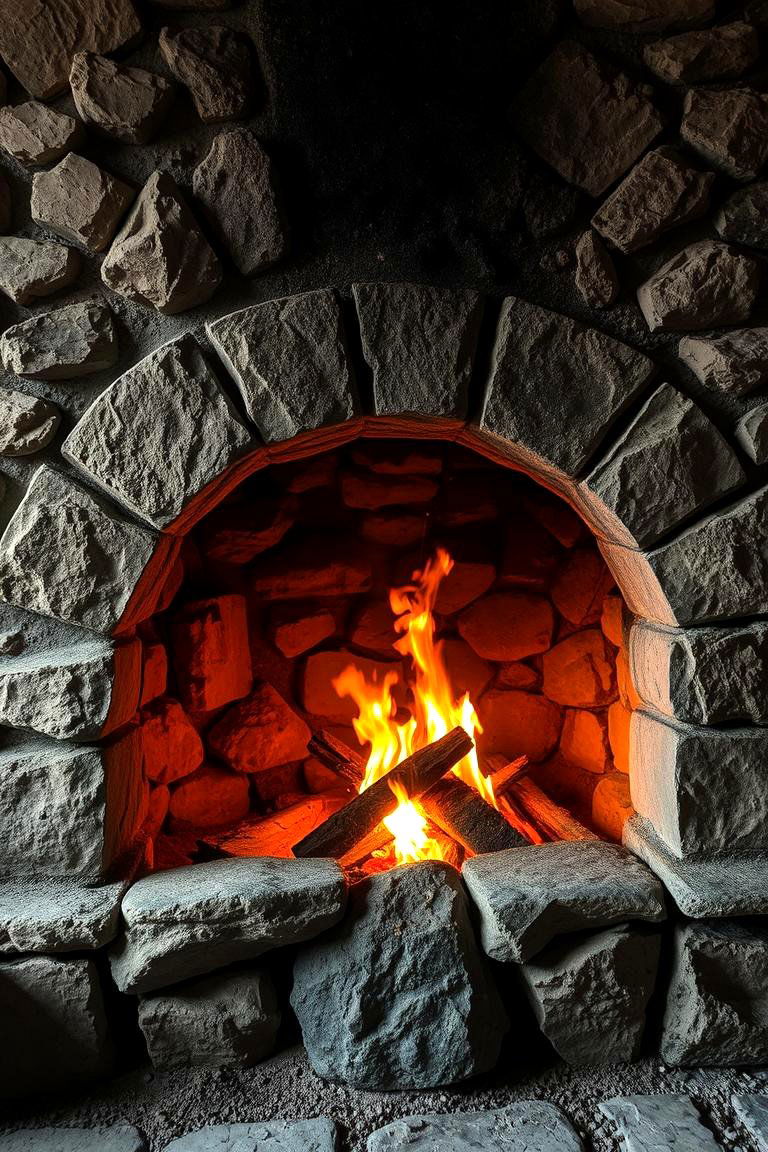
A warm glow emanates from a stone hearth, inviting you to experience the age-old tradition of stone hearth cooking. This method harnesses the natural heat retention of stones, ensuring even cooking and a delightful smoky flavor in every dish. The technique enhances food’s natural taste and encourages sustainable, resourceful practices. Using this ancient method reconnects you with traditions that celebrate simplicity and innovation. It offers an ideal way to transform your daily meals into culinary adventures steeped in history and authenticity.
2. Open Fire Grilling

By embracing open fire grilling, you tap into the elemental power of fire to create robust, flavorful dishes. This method imparts a distinctive char and smoky aroma to meats and vegetables, making each bite memorable. Open fire grilling uses natural wood fuels and simple tools, fostering a direct connection with nature. It offers practical tips on managing flame and heat while evoking a sense of adventure. This primitive approach encourages you to experiment and savor the authentic flavors that only fire-cooked meals can deliver.
3. Wood-Fired Oven Baking
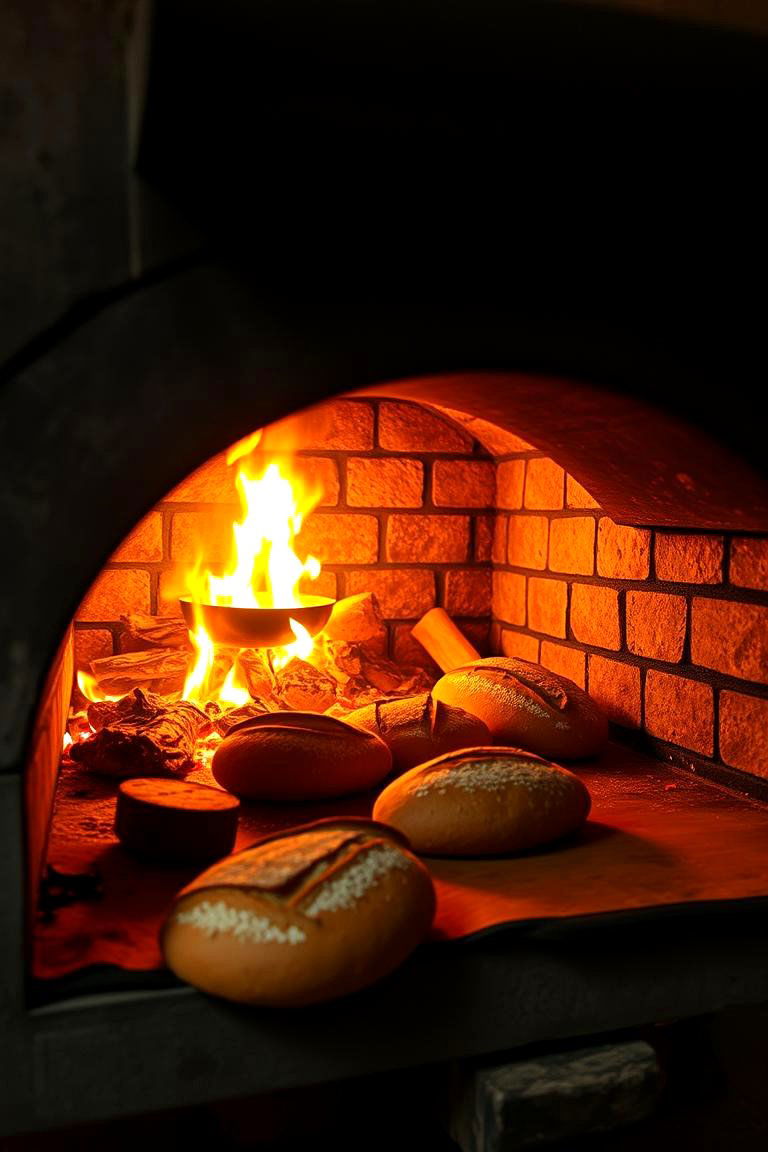
The radiant heat of a wood-fired oven awakens your senses as you bake artisanal bread with a natural crust and tender crumb. This method infuses every loaf with a rustic flavor, thanks to the consistent, high-temperature environment created by burning wood. Wood-fired oven baking not only elevates the taste of pizzas and casseroles but also reinforces a sustainable way of cooking. It serves as a bridge to centuries-old baking traditions while providing practical advice on using natural materials to enhance flavor and texture.
4. Clay Pot Cooking
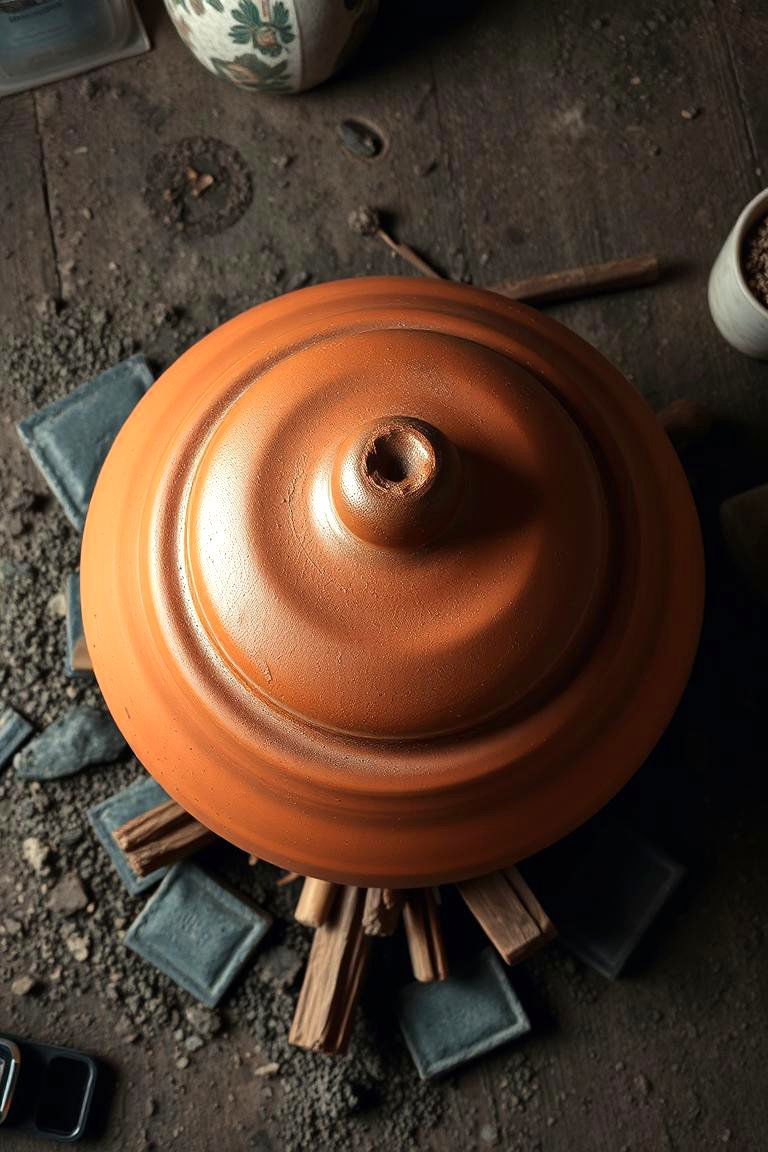
This technique of clay pot cooking transforms simple ingredients into delicious meals by harnessing the porous nature of clay. The pot’s ability to retain heat and moisture naturally tenderizes food, infusing dishes with an earthy, subtle flavor. Embracing clay pot cooking encourages slow, mindful preparation and celebrates the beauty of primitive culinary methods. It offers practical tips to enhance flavor and texture while reconnecting you with traditions that emphasize simplicity and natural cooking processes, making every meal a comforting experience.
5. Earthenware Food Storage
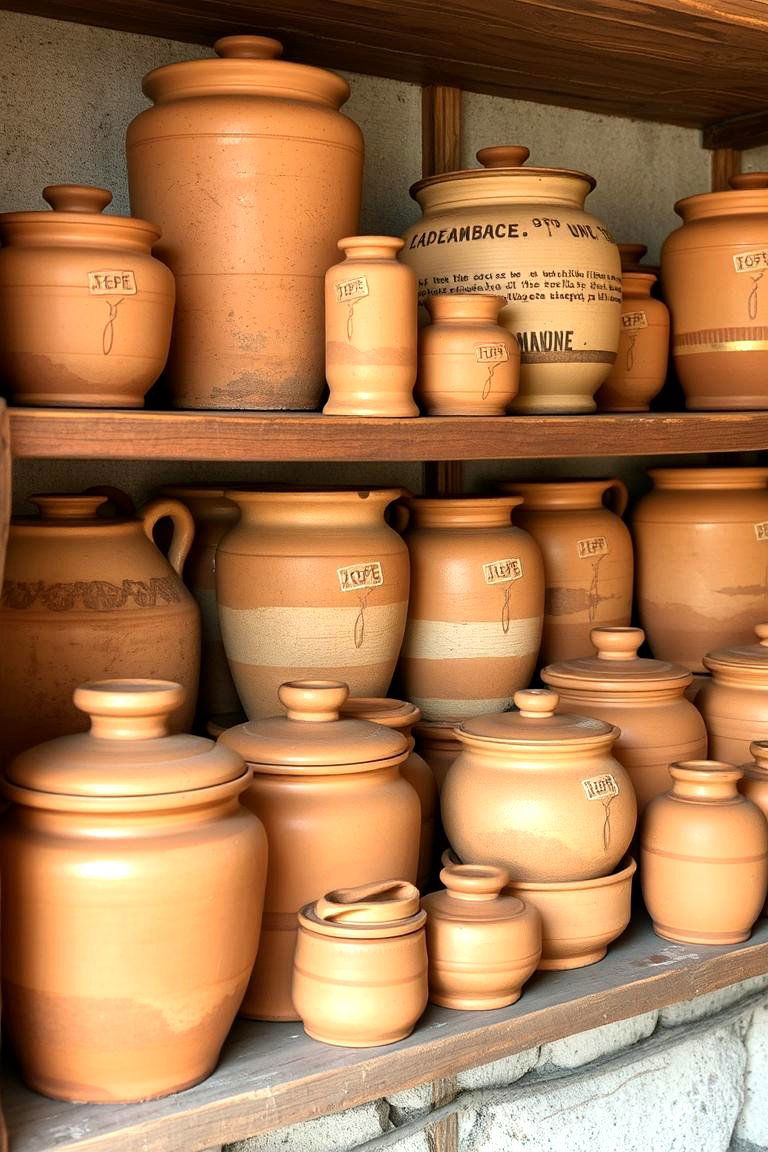
For preserving the natural taste of your ingredients, earthenware food storage offers a timeless solution. Utilizing porous clay containers, this method naturally regulates moisture and temperature to keep food fresh longer. It reduces the need for modern refrigeration, blending eco-friendly practices with ancient wisdom. Embrace this approach to add rustic charm to your kitchen while ensuring that grains, vegetables, and leftovers maintain their authentic flavors. This sustainable technique reinforces the connection between natural materials and practical, resourceful living.
6. Solar Oven Cooking

With the simplicity of solar oven cooking, you can harness the sun’s energy to prepare nutritious meals naturally. This eco-friendly technique uses reflective surfaces to concentrate sunlight, turning it into heat that cooks food slowly and evenly. Ideal for sunny days, solar ovens reduce energy consumption and foster sustainable practices. Experiment with this method to enjoy delicious, healthful dishes while reconnecting with the natural environment. Its blend of innovation and ancient wisdom transforms everyday cooking into a mindful, energy-efficient ritual.
7. Handcrafted Wooden Utensils
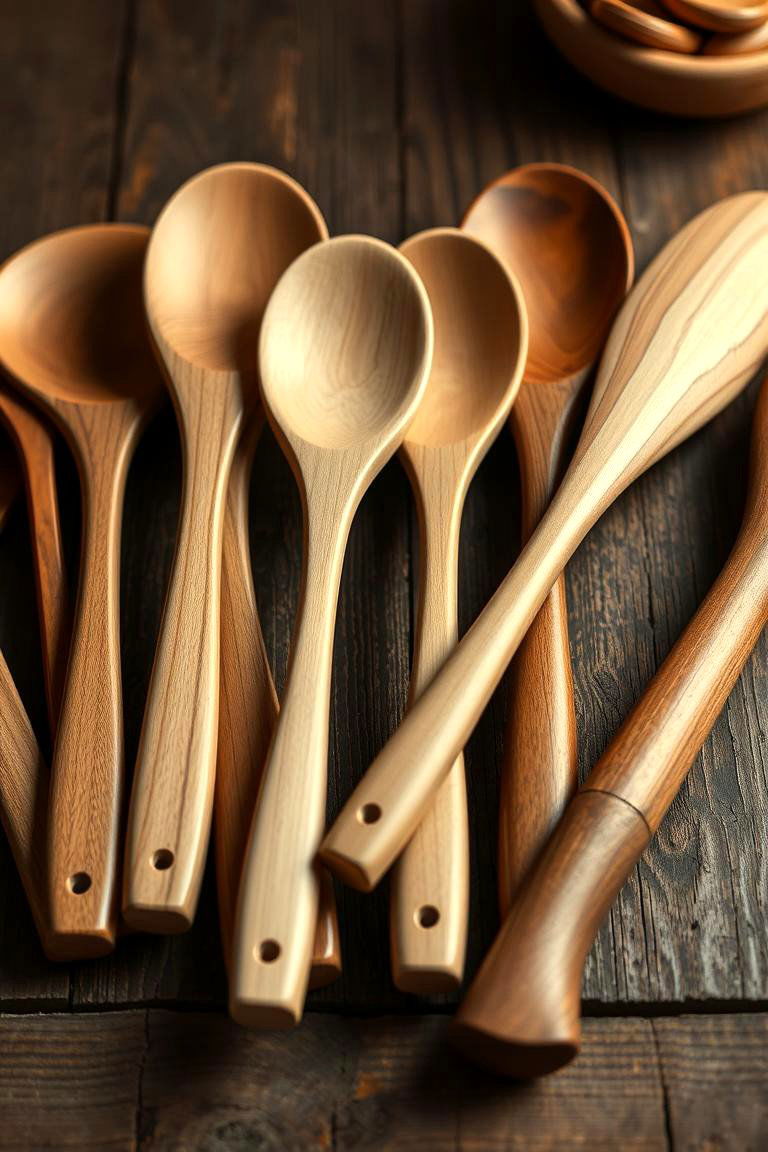
Consider the charm of handcrafted wooden utensils, which add a unique, personal touch to every kitchen task. Carved from natural wood, these tools offer durability and a tactile connection to ancient craftsmanship. Their warm textures and simple design enhance your cooking experience by making each stir and chop feel purposeful. Using wooden utensils not only promotes sustainable practices but also revives traditional artistry. They serve as both functional tools and decorative pieces, inspiring creativity and a deeper appreciation for time-tested kitchen traditions.
8. Bone and Antler Tools

Another timeless innovation lies in the use of bone and antler tools, which bring a rustic authenticity to everyday culinary tasks. Derived from natural sources, these implements honor the resourcefulness of primitive techniques while offering practical solutions for cutting, scraping, and stirring. Their natural texture and durability evoke a deep connection to ancestral methods, inspiring you to explore sustainable kitchen practices. Incorporating bone and antler tools into your routine enriches your cooking experience with a sense of heritage and respect for nature’s bounty.
9. Wild Herb Garden Integration
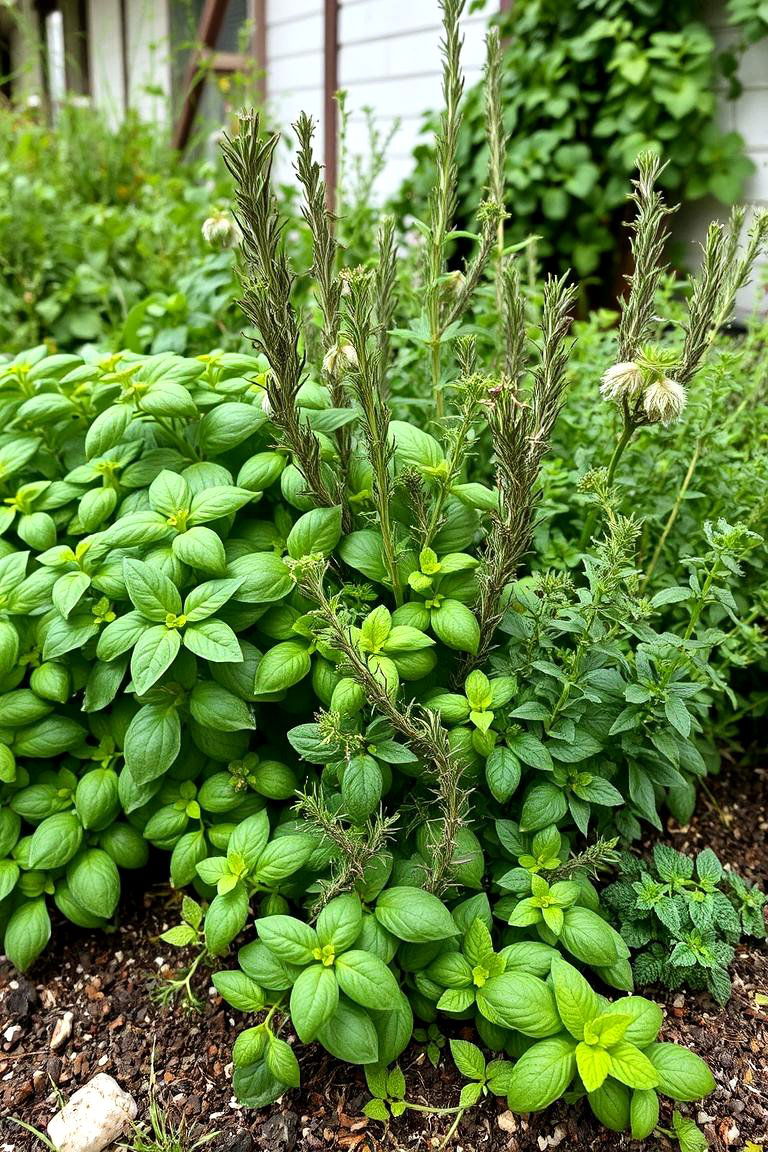
Looking to enhance flavor naturally? A wild herb garden integration transforms your kitchen into a living pantry bursting with fresh basil, rosemary, and mint. This approach not only elevates your dishes with unmatched aroma and taste but also promotes a sustainable, self-sufficient lifestyle. Cultivating your own herbs encourages you to experiment with organic flavors and reduces dependency on store-bought seasonings. Embrace the joy of growing and using fresh herbs, and let nature’s bounty inspire a more vibrant, healthful cooking experience in your primitive kitchen.
10. Primitive Butchering Techniques
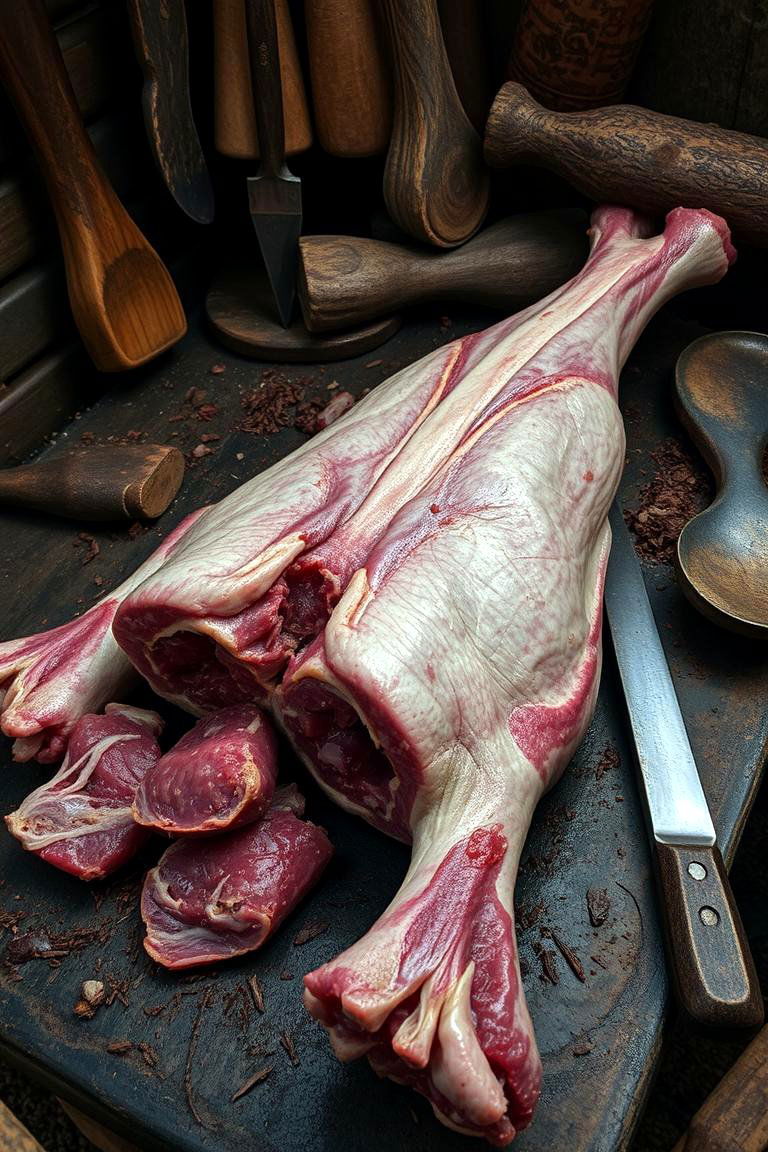
What makes primitive butchering techniques enduring is their focus on simplicity and respect for natural resources. These time-tested methods emphasize careful processing of wild game to preserve flavor and nutrition while minimizing waste. Learning these techniques offers practical insights into sustainable meat preparation and reconnects you with traditional culinary skills. By using simple, manual tools, you enhance the authenticity of your cooking and honor the heritage of primitive kitchens. This approach not only improves your skills but also instills a deeper respect for the food you prepare.
11. Natural Fermentation Methods
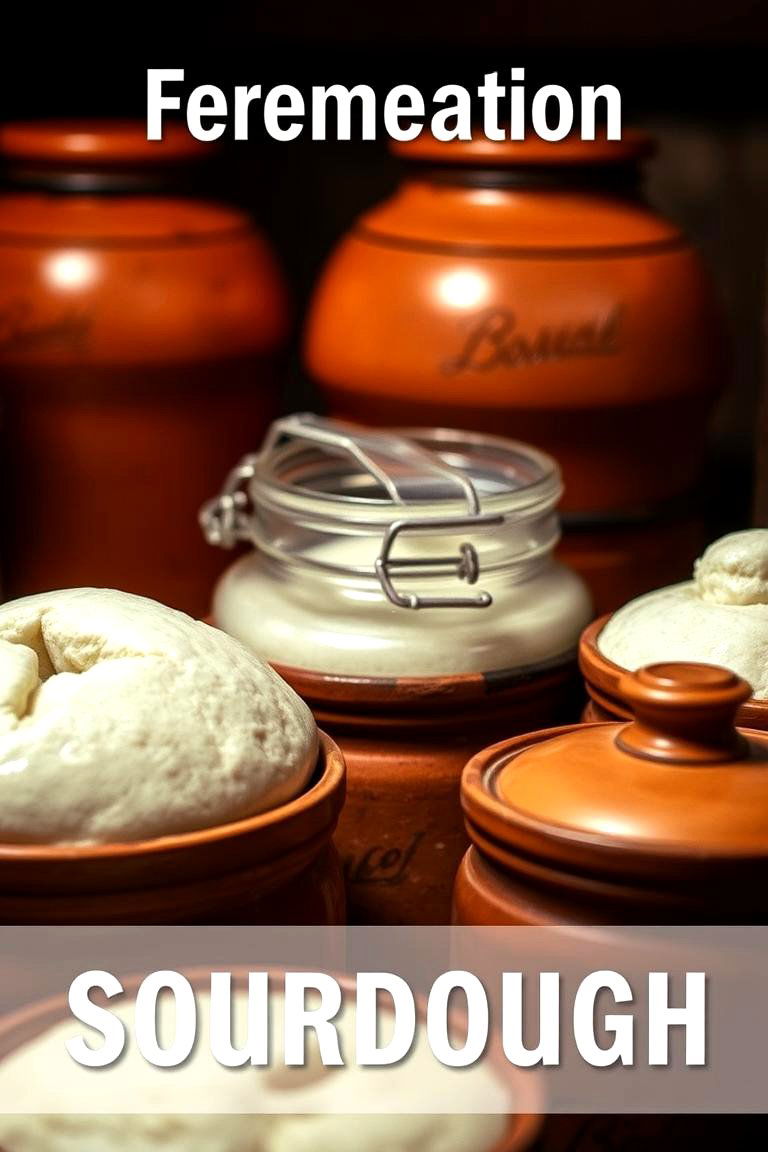
The subtle art of natural fermentation methods breathes life into raw ingredients, creating tangy, probiotic-rich foods that enhance every meal. By harnessing naturally occurring bacteria, you can preserve vegetables and craft sourdough starters without modern equipment. This technique enriches flavors while promoting gut health, offering an organic alternative to processed foods. Embracing natural fermentation connects you with centuries-old culinary traditions and inspires creative experimentation in the kitchen. It is a sustainable, healthful way to elevate your dishes with robust, layered flavors.
12. Manual Grain Grinding
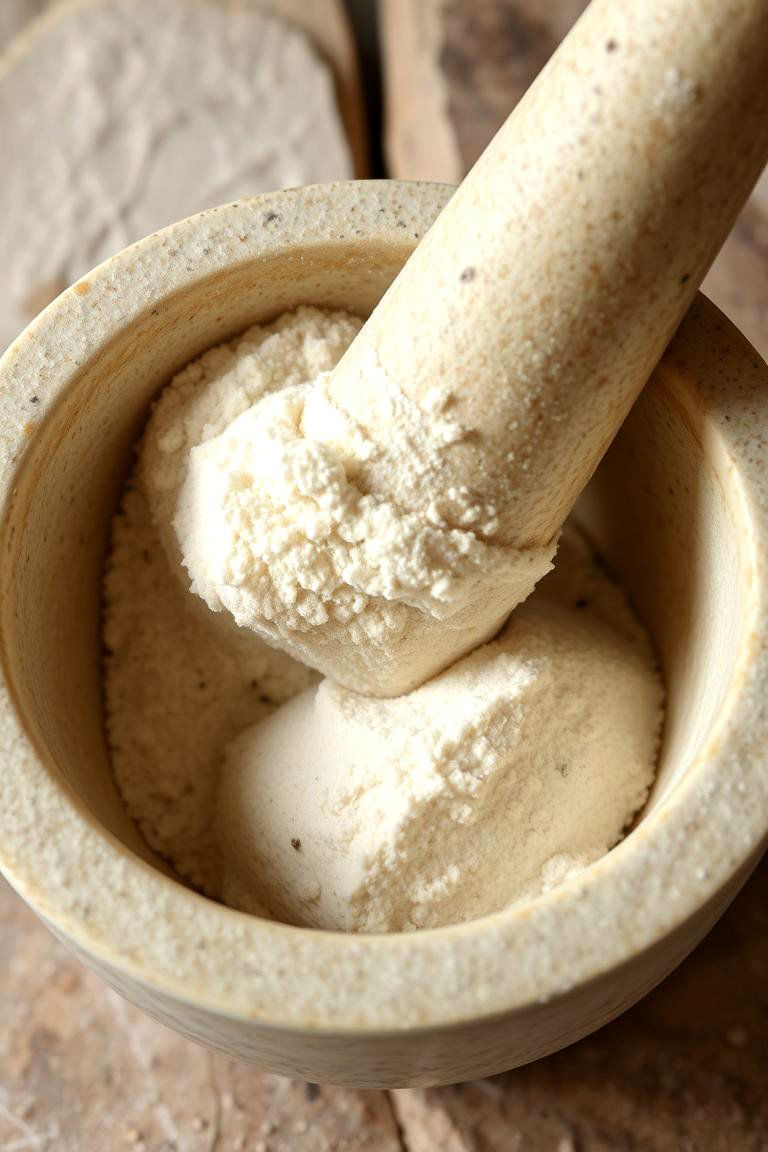
Due to the timeless appeal of manual grain grinding, you can transform whole grains into fresh, aromatic flour using a mortar and pestle. This labor-intensive process honors ancient culinary methods and preserves the nutritional integrity of the grains. It encourages you to appreciate the origins of your food and engage in a hands-on, meditative cooking practice. The simple act of grinding grains manually enhances flavor and texture in your baked goods, fostering a deeper connection with traditional techniques that prioritize natural processes and sustainability in everyday cooking.
13. Pit Oven Cooking

Despite modern conveniences, pit oven cooking remains a cherished primitive method for slow-cooking and flavor infusion. By digging a shallow pit and lining it with heated stones, you create an earthy oven that gently bakes meat, vegetables, and bread. This technique produces a unique smoky aroma and tender texture that modern appliances rarely replicate. It encourages you to embrace nature’s simplicity and transform routine meals into extraordinary feasts. Pit oven cooking is a celebration of resourcefulness and age-old culinary wisdom, inspiring you to explore innovative, hands-on cooking techniques.
14. Smokehouse Preservation
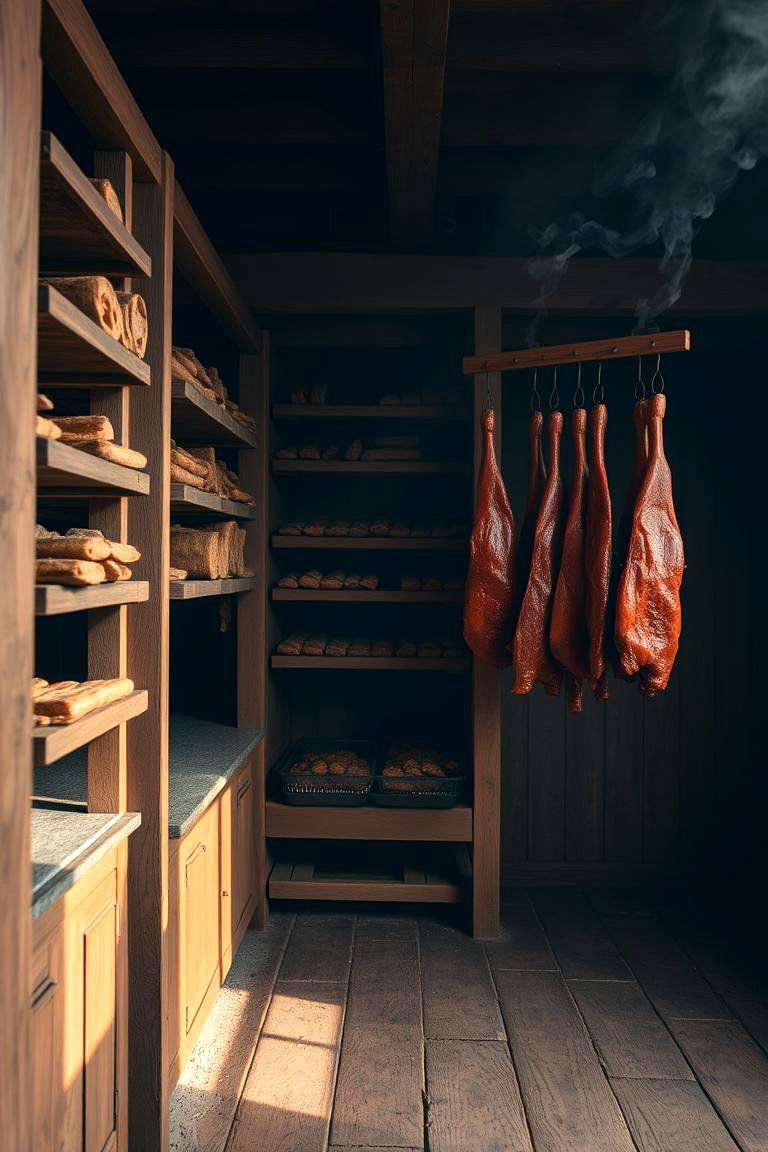
With the art of smokehouse preservation, food transforms into richly flavored, long-lasting delicacies using simple, time-tested methods. This primitive technique infuses meats and fish with a deep, smoky taste while naturally extending their shelf life. Smokehouse preservation emphasizes patience and respect for nature’s rhythms, offering an eco-friendly alternative to modern storage methods. It invites you to explore ancient practices that celebrate both flavor and sustainability. By incorporating smokehouse techniques, you enhance your culinary skills and connect with traditions that value natural preservation and resourceful cooking.
15. Bamboo Steaming Techniques
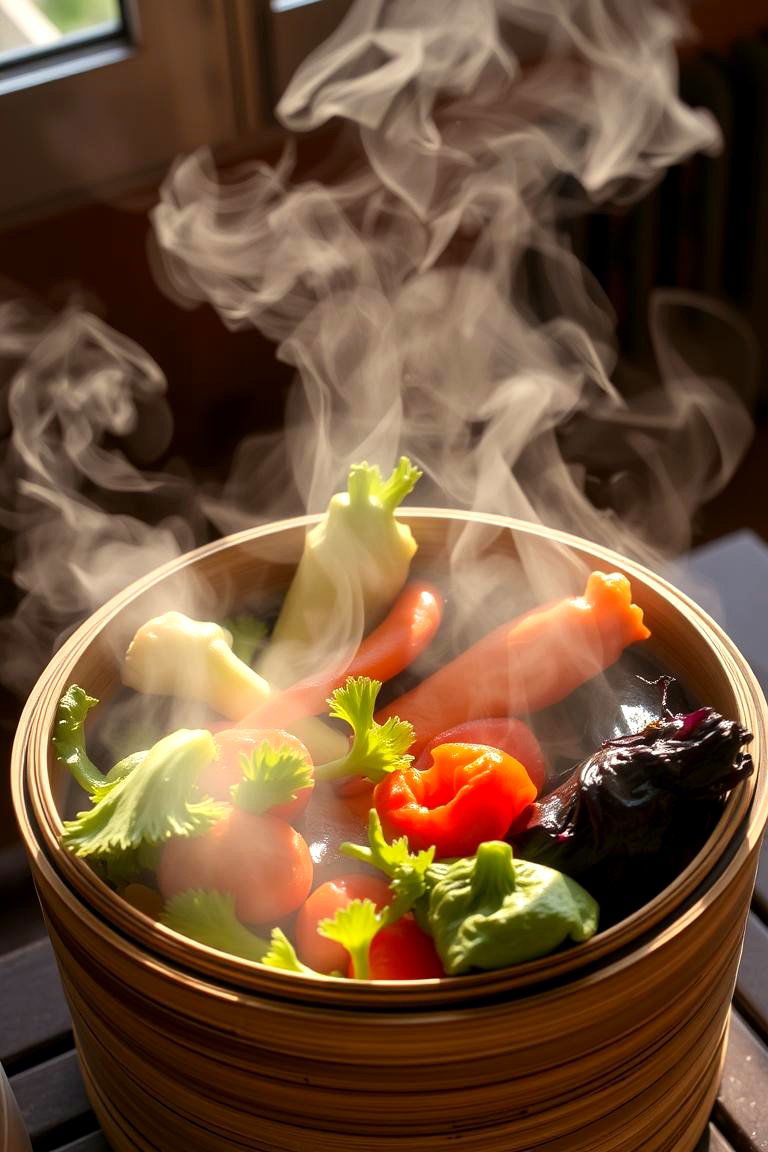
However, bamboo steaming techniques offer a delicate and healthy way to cook food using naturally sourced materials. Steamer baskets crafted from bamboo gently cook vegetables and dumplings, preserving their nutrients and imparting a subtle, fresh aroma. This eco-friendly method embraces simplicity and sustainability, evoking the elegance of traditional Asian kitchens. It encourages mindful cooking and a return to nature’s basics, making every meal light, flavorful, and nutritious. Bamboo steaming transforms your culinary experience by blending ancient wisdom with practical, modern sustainability.
16. Natural Water Filtration in Kitchens
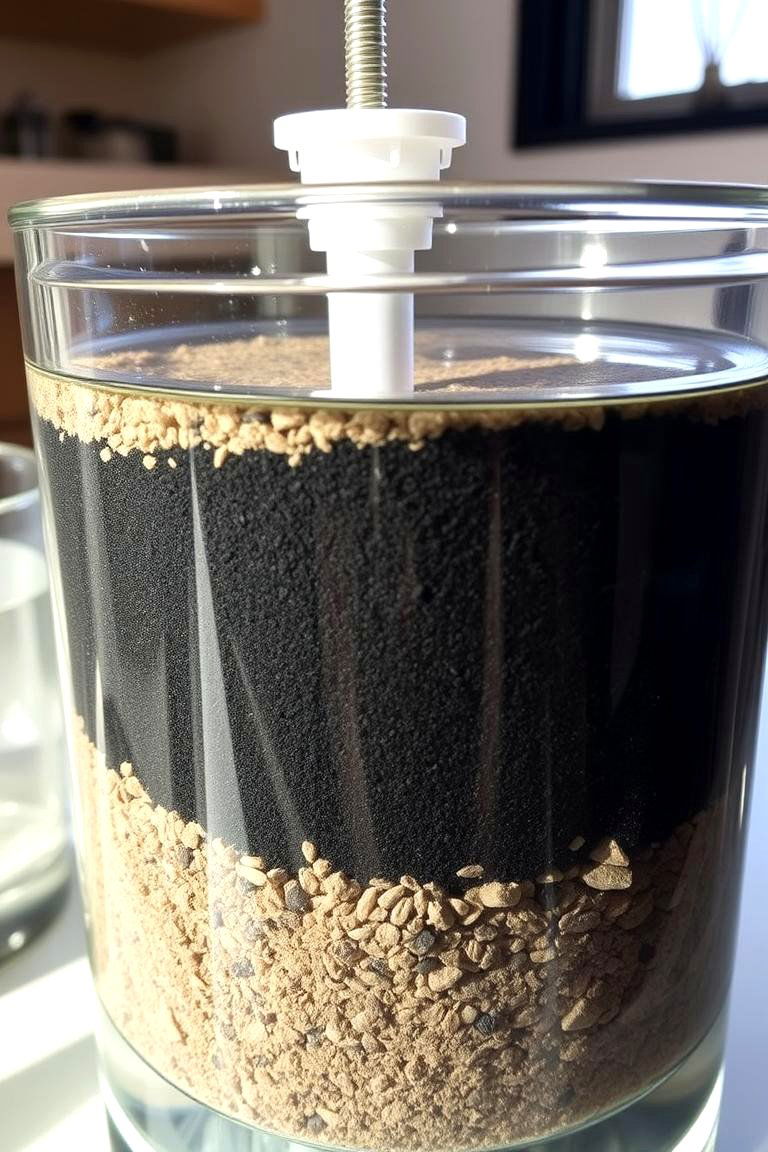
From the simplicity of natural water filtration in kitchens emerges an eco-friendly solution to purify water using sand, charcoal, and gravel. This ancient method offers a practical alternative to modern filters, ensuring clean, safe water while conserving energy. It inspires a self-sufficient lifestyle and reconnects you with the natural processes of purification. Implementing this technique in your kitchen demonstrates resourcefulness and environmental care, providing a hands-on approach to maintaining health and sustainability through primitive wisdom and practical ingenuity.
17. Mud Brick Construction
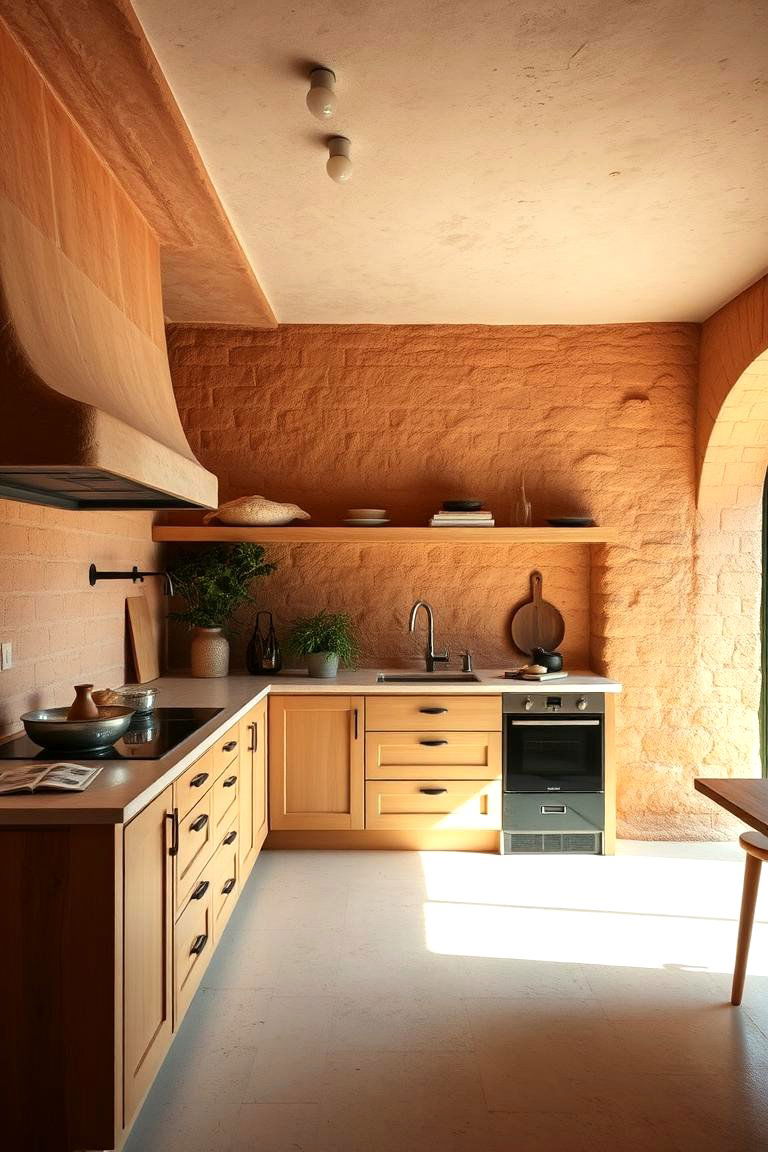
By incorporating mud brick construction into your kitchen design, you create a warm, earthy atmosphere that celebrates primitive craftsmanship. Made from natural clay and dried under the sun, mud bricks offer excellent thermal regulation and rustic charm. This sustainable building method adds texture and authenticity to your culinary space while honoring age-old construction practices. It encourages you to blend functionality with tradition, creating a kitchen that is both aesthetically pleasing and environmentally responsible. Mud brick construction stands as a testament to creative, resourceful design rooted in nature.
18. Traditional Butcher Block Surfaces
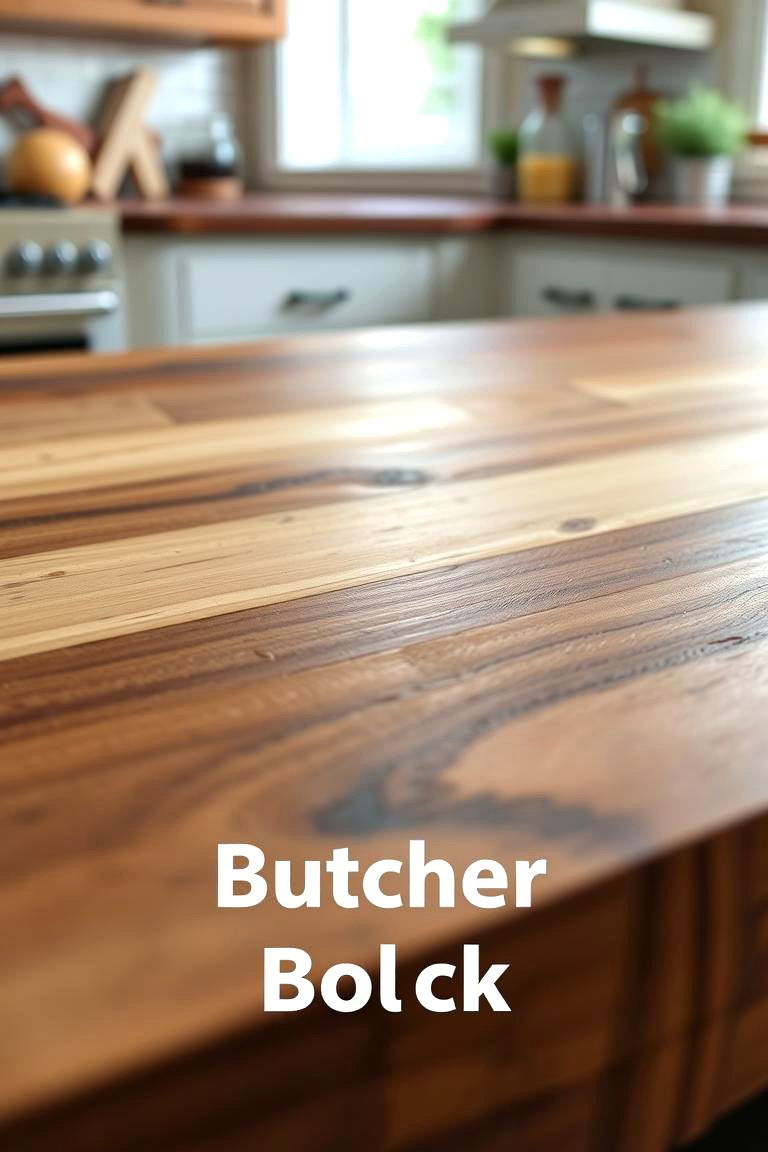
Another essential primitive kitchen idea is embracing traditional butcher block surfaces crafted from solid, natural wood. These cutting boards offer durability and a hygienic workspace while showcasing the natural beauty of wood grain. Their warm, rustic appearance adds a timeless charm to your kitchen décor. Traditional butcher blocks inspire practical, efficient food preparation, connecting you with artisanal methods that honor both function and heritage. They serve as a reliable centerpiece in your culinary space, reflecting sustainability and the enduring appeal of handcrafted materials.
19. Primitive Spice Storage

What truly elevates your culinary experience is primitive spice storage that utilizes natural materials like clay, wood, or stone to preserve aromatic seasonings. This method maintains the freshness and potency of spices while adding an earthy aesthetic to your kitchen. It encourages you to organize and display your spices in eco-friendly containers, reconnecting with traditional methods of storage and presentation. Primitive spice storage not only keeps ingredients at their best but also inspires creativity by blending function with ancient charm, allowing every meal to burst with natural, vibrant flavor.
20. Sun-Dried Food Preservation
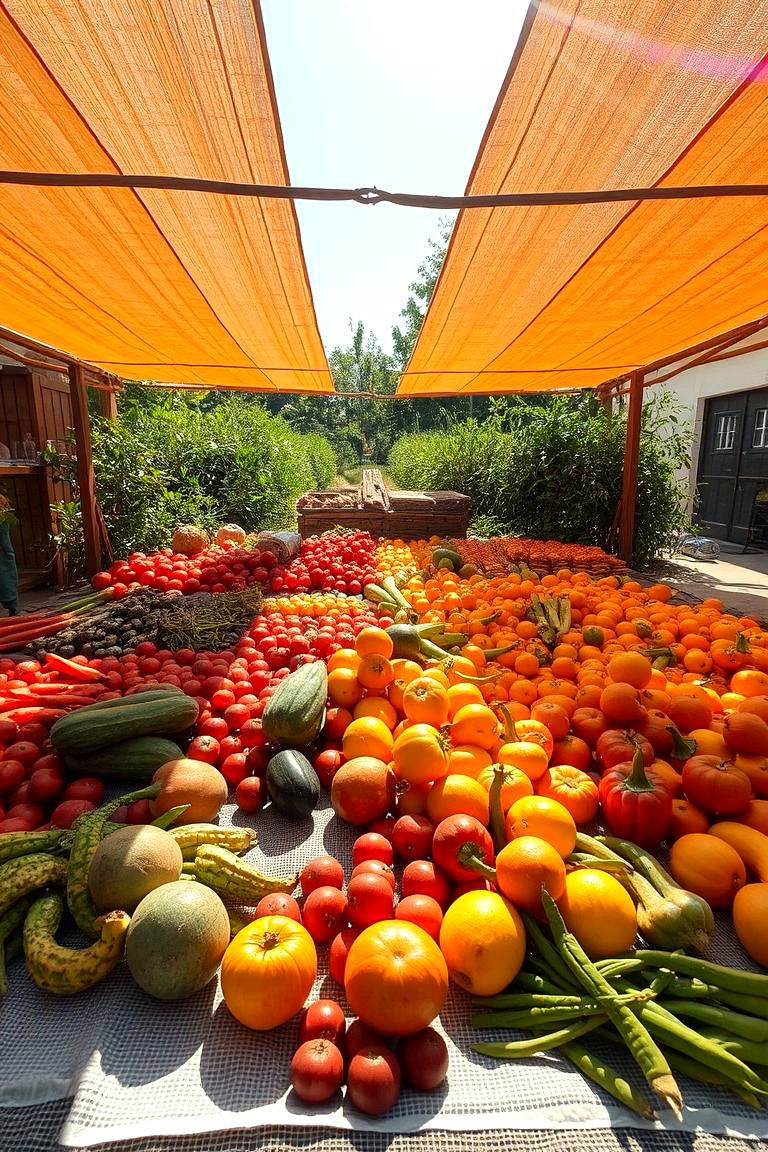
To experience the full potential of natural preservation, sun-dried food preservation uses the power of sunlight to dehydrate fruits, vegetables, and meats. This technique intensifies flavors and creates unique textures that modern methods cannot replicate. Relying on the sun’s gentle heat, it offers an energy-efficient, sustainable way to extend the shelf life of your ingredients. Embracing sun-drying reconnects you with primitive culinary practices while celebrating nature’s role in transforming simple foods into delicious, long-lasting treats.
21. Handcrafted Pottery for Cooking
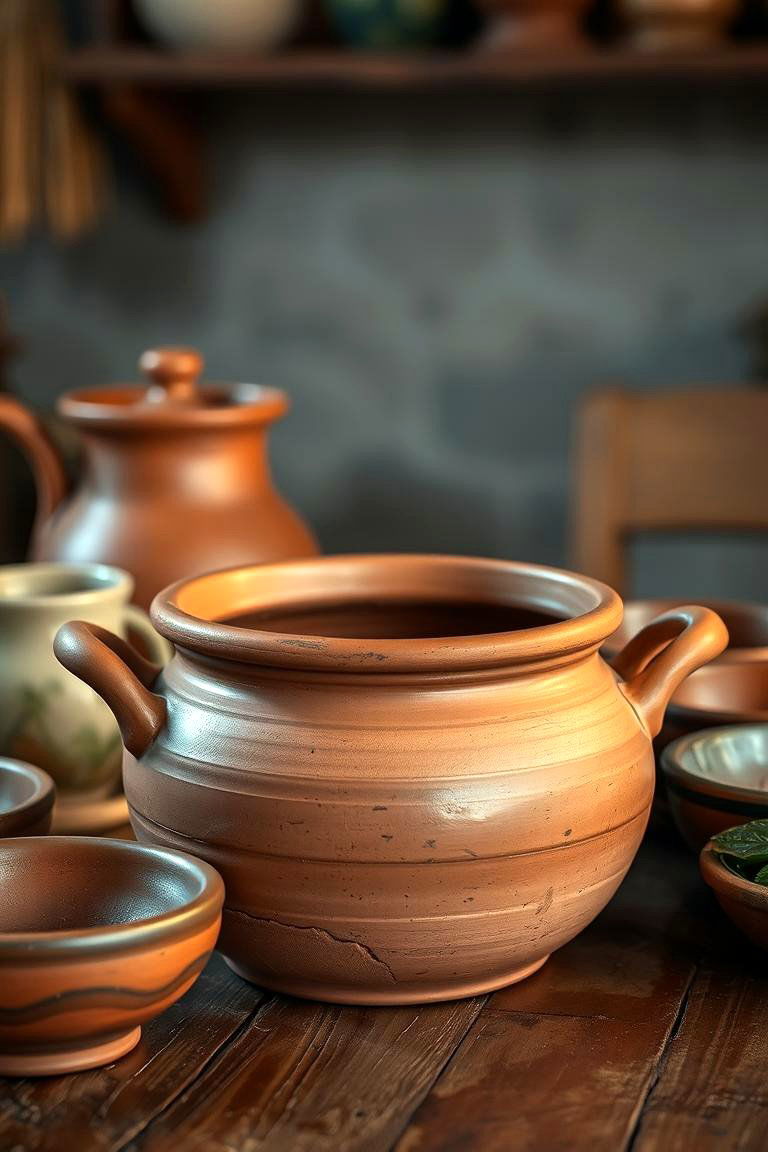
These handcrafted pottery pieces are a testament to the beauty of artisan culinary tools. Meticulously shaped by hand, each pot offers even heat distribution and a natural, earthy flavor to every dish. Using handcrafted pottery bridges the gap between art and utility, transforming cooking into a mindful, sensory experience. It encourages you to appreciate the rich heritage of traditional craftsmanship and the unique charm of natural materials. This approach not only enhances your meals but also infuses your kitchen with a timeless, creative spirit rooted in primitive innovation.
22. Natural Firewood Management
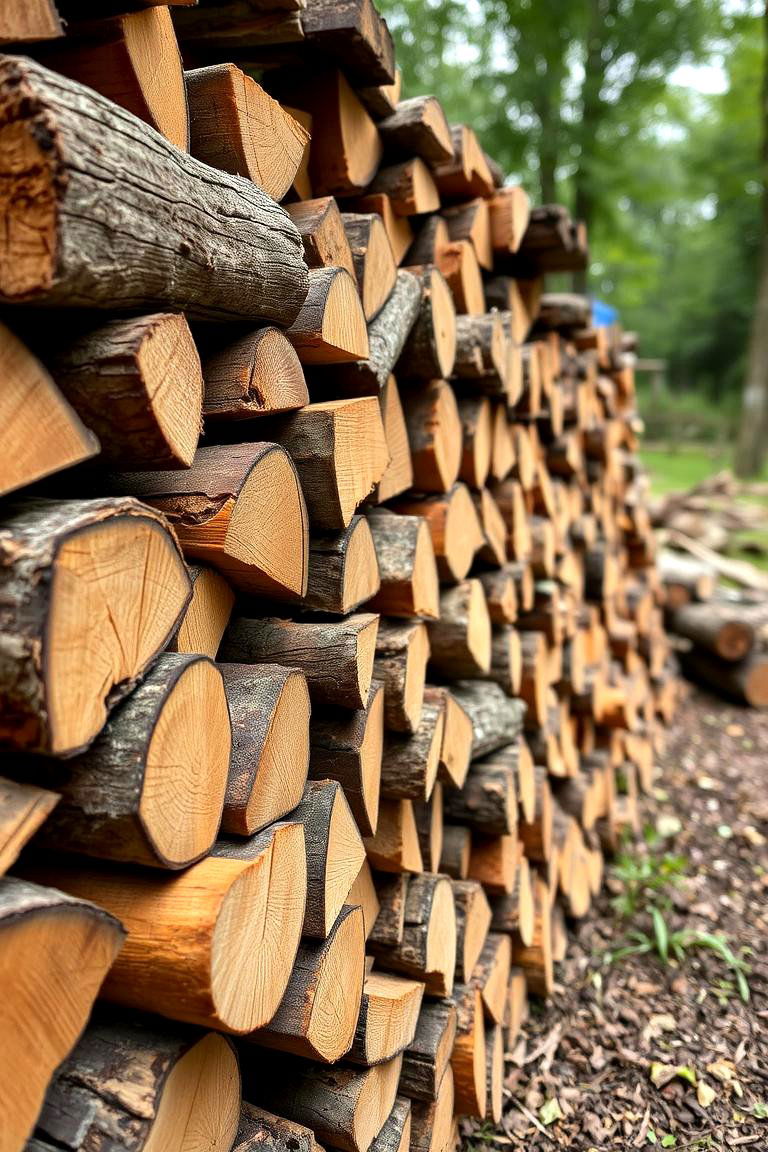
To optimize your cooking experience, natural firewood management emphasizes the careful selection, drying, and storage of wood for an ideal flame. This sustainable practice ensures that each log burns efficiently, providing a steady heat source for your primitive kitchen. It teaches practical tips on fire control and resourcefulness while fostering a deep connection with nature. Managing firewood naturally enhances the ambiance of your cooking space, inviting you to appreciate the raw power of fire and the simplicity of ancient methods that continue to inspire modern culinary creativity.
23. Herbal Infusion Beverage Brewing
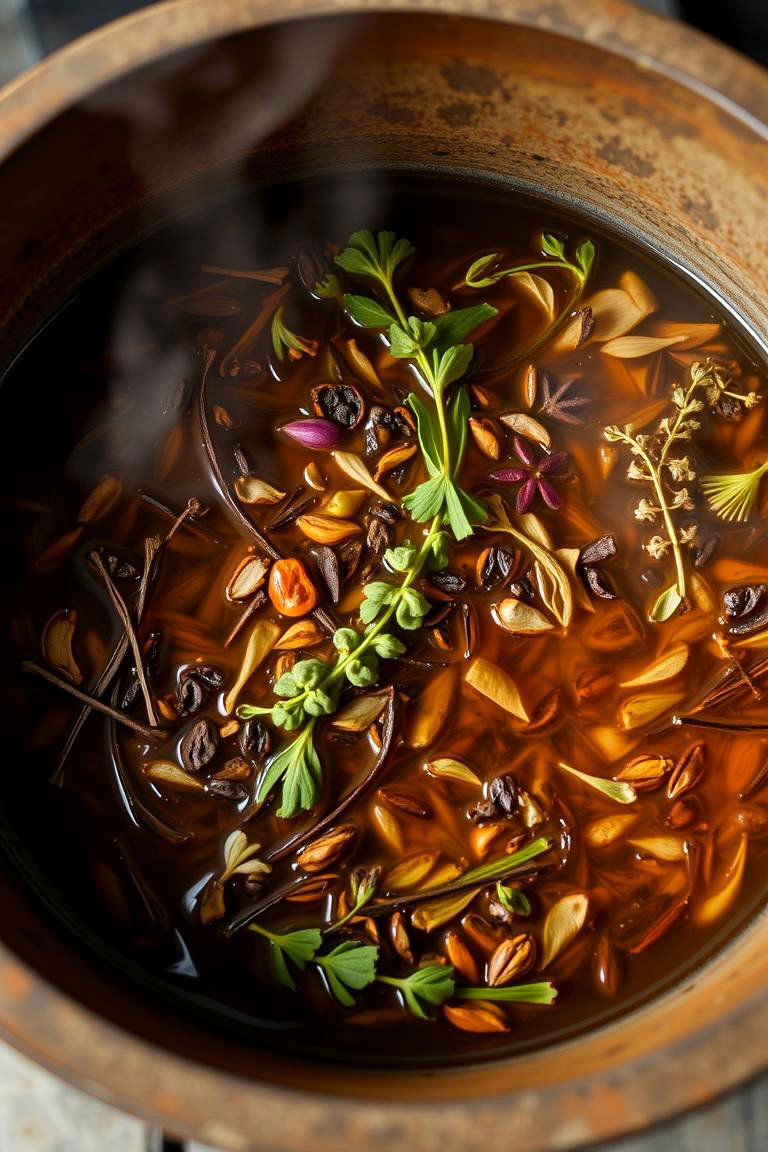
These herbal infusion beverage brewing techniques offer a refreshing twist to traditional kitchen practices. By simmering locally sourced herbs, roots, and spices, you create aromatic, healthful drinks that capture nature’s essence. This method encourages experimentation with natural flavors while offering subtle, wellness-boosting benefits. It invites you to explore the delicate balance of flavor and nutrition, reconnecting with centuries-old remedies and sustainable practices. Enjoy a cup of herbal infusion that not only quenches your thirst but also nourishes your body and soul with ancient wisdom.
24. Recycled Natural Storage Containers

Finally, recycled natural storage containers exemplify sustainable innovation by repurposing materials like wood, clay, and bamboo into practical kitchen solutions. These eco-friendly containers add rustic charm while minimizing waste and preserving food naturally. They encourage a resourceful lifestyle by blending the beauty of reclaimed materials with timeless storage techniques. Embracing this approach inspires creativity and environmental stewardship, transforming your kitchen into a space where tradition and modern sustainability coexist harmoniously.
Conclusion:
Bringing together centuries-old techniques and modern sensibilities, these 24 Primitive Kitchen Ideas illuminate a path to authentic, sustainable culinary experiences. From stone hearth cooking to recycled natural storage, each idea offers practical tips and timeless inspiration that reconnect you with nature. Celebrate the art of simple, resourceful cooking while savoring genuine flavors and time-honored traditions. Let these methods empower you to innovate and explore your own kitchen with confidence and creativity.


